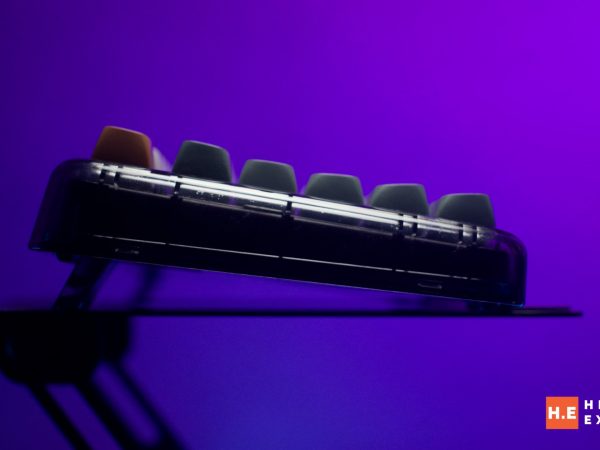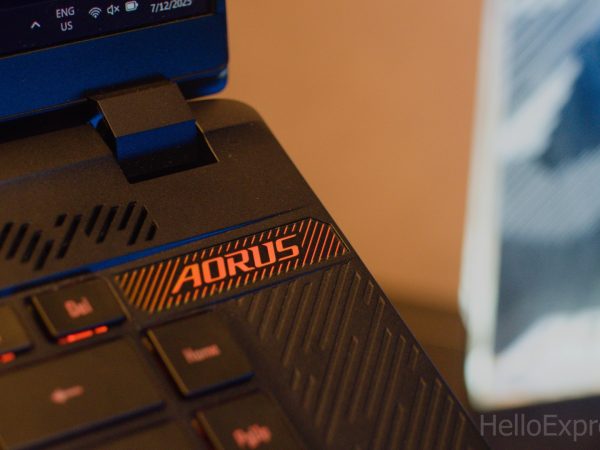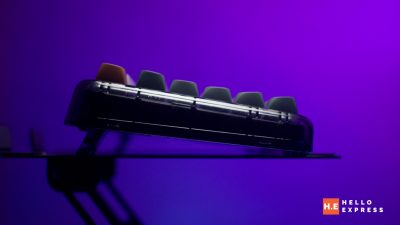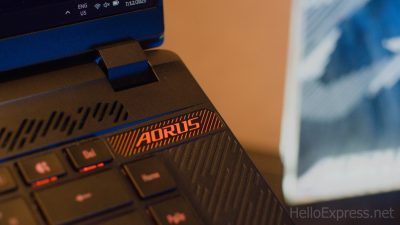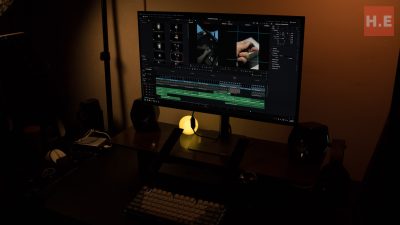
Moondrop Space Travel: Dropping beats in Space
I was first introduced to Moondrop for a different reason. I was told that they make some of the finest mechanical switches. However, one day, I discovered that they also create well-received Chi-Fi equipment at very affordable prices.

Introducing the Moondrop Space Travel, an affordable TWS with a unique multi-mode feature. Multi-mode TWS is common nowadays, but what we usually see is a choice between normal and game modes, where TWS sacrifices audio quality to reduce latency. However, the Space Travel offers a different kind of multi-mode: Reference, Bass Head, and Monitor mode. This is quite remarkable for TWS at RM100 price point.
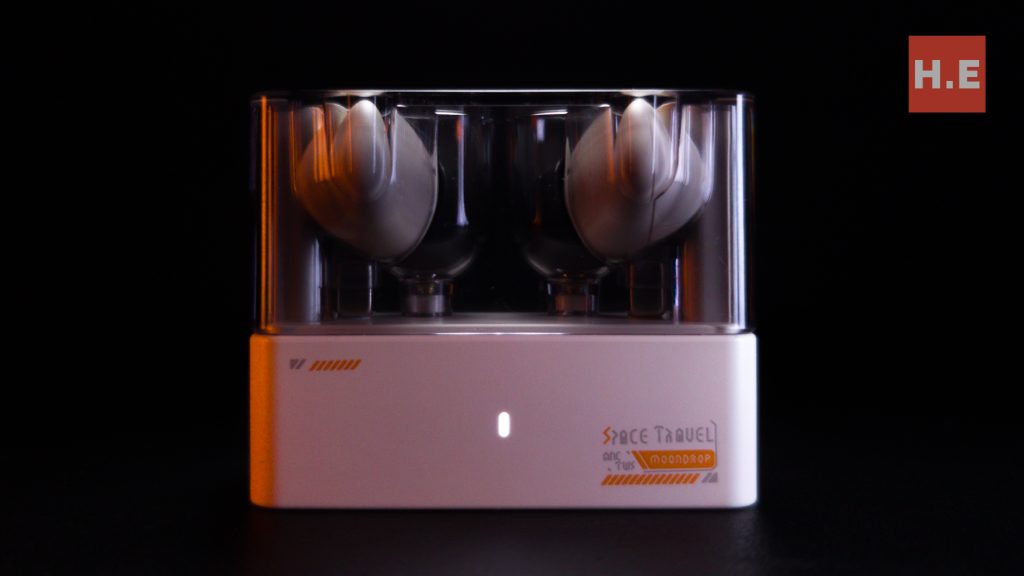
We call it remarkable because the idea of having a desirable bass mode on TWS requires significant sound engineering, but it’s not impossible. Creating a monitor mode that aims to provide balanced, natural sound across all frequencies is even more challenging.
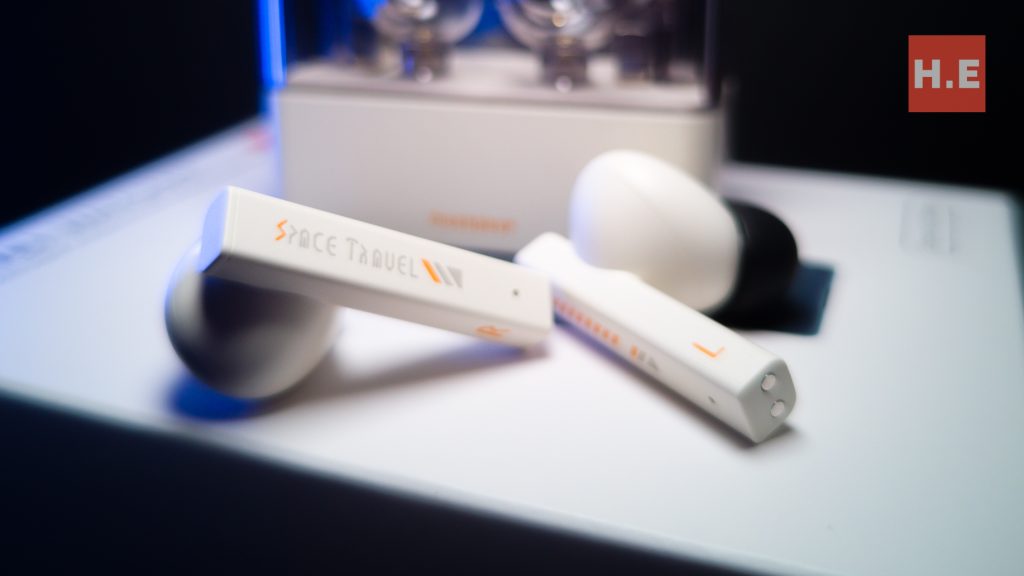
What’s even more surprising is that Moondrop claims the Space Travel can do all this at the humble price of only around RM110 or approximately USD30. Is it true? Will it outperform many other TWS options? Can the Space Travel’s multi-mode capabilities really deliver? And, most importantly, does it sound good?
Built: Soyuz Homage

Straight out of the box, the Space Travel looks like something from the Soyuz space capsule color scheme. It’s built as an open design where the earbuds can be slotted out directly. The majority of the casing is transparent with a tinge of grey, while the base is made of white plastic with a slight shade of orange. The base houses the LED indicator at the front, and below it, the USB-C charging port. There is no casing on the case, so all operations rely solely on the touch sensor on the earbuds.
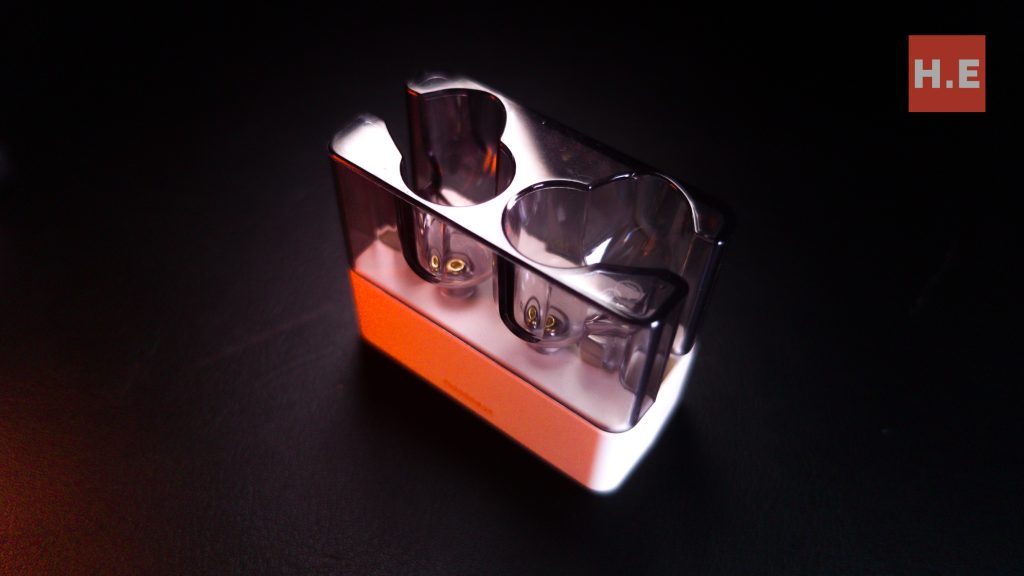
The earbuds use a similar color scheme to the casing’s base. The battery compartment is connected to a slightly larger than usual speaker housing. The top part of the battery compartment is the only control available for the whole Space Travel TWS, which we found rather tedious, as usually, the buttons on the casing are reserved for pairing operations and are easy and straightforward.
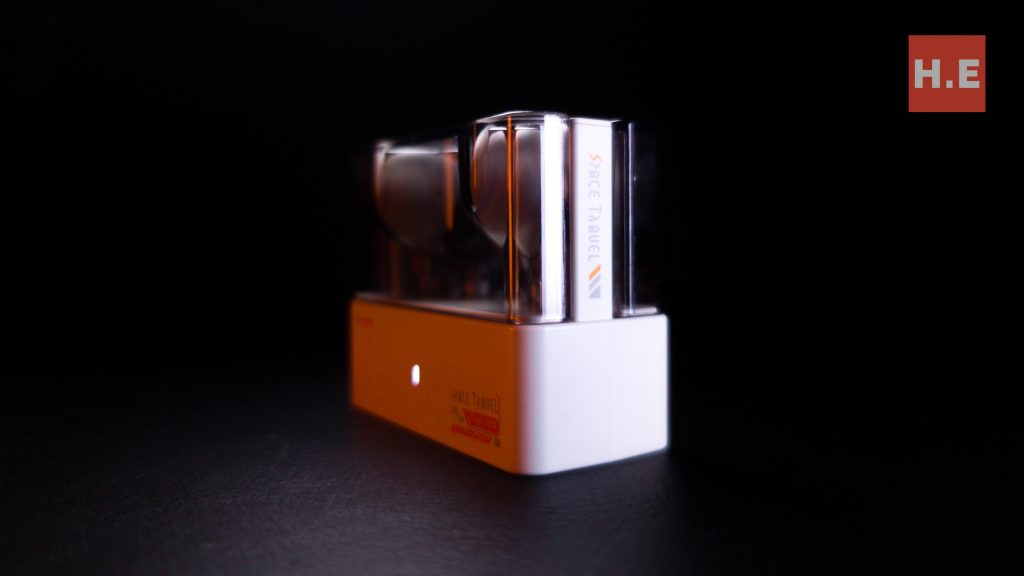
Operation
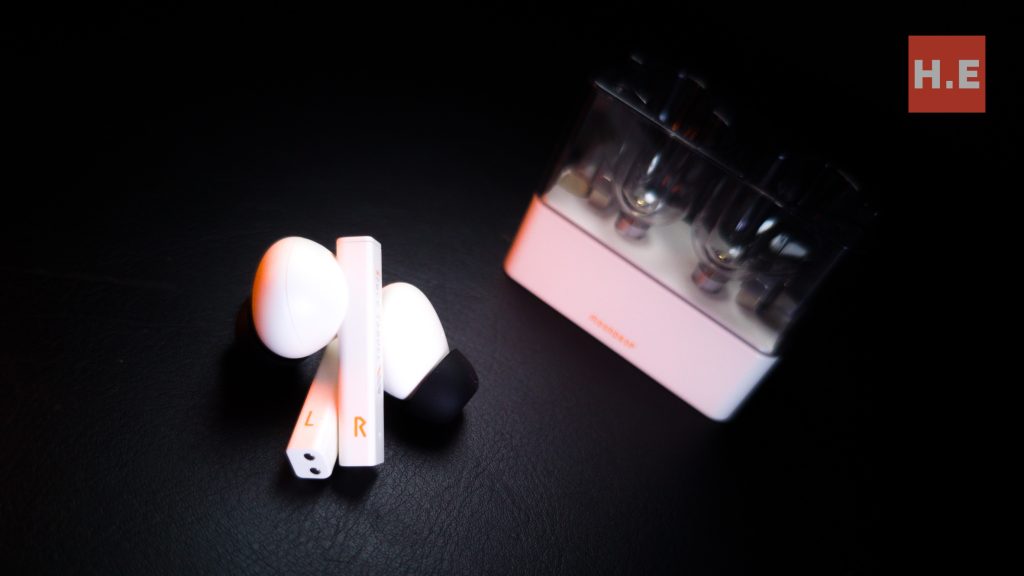
When we first unboxed the Space Travel, it was already in pairing mode, so connection was an easy operation. Multi-pairing, however, is a complicated operation. Users first need to disconnect by touching both sides of the touch area for 8 seconds, disconnecting from the current device only then allows it to be available for a new connection.
Space Travel Fitting: As sucure as parking space capsule
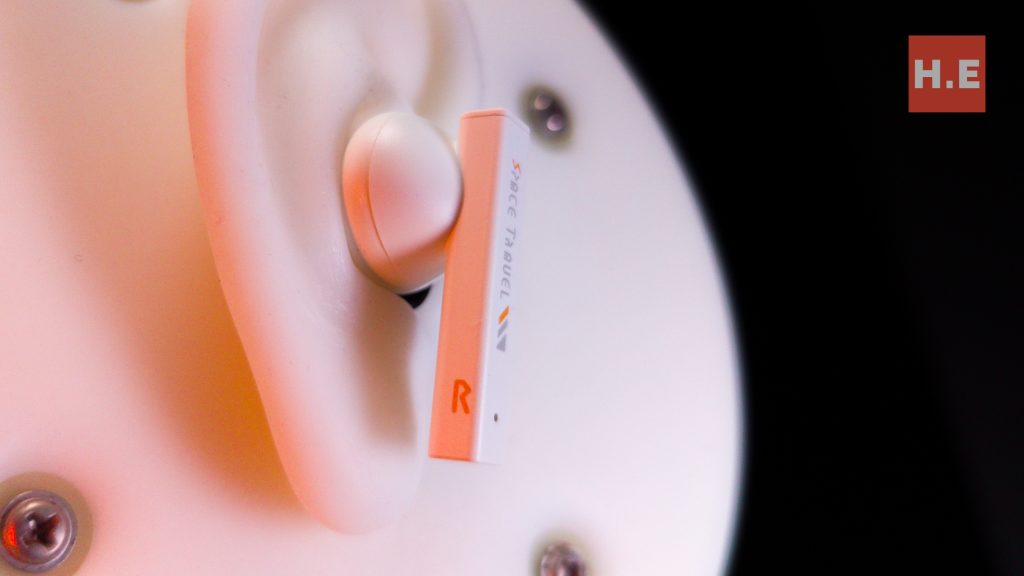
The Space Travel’s earbud casing is very well-designed. The round shape of the earbud provides a secure fit when worn, and the long oval shape also blocks off most noise from entering through gaps. The silicone ear tips are among the softest I have worn, comfortable and gentle to the skin with no discomfort over long periods of wearing.
Space Travel Audio Quality: Best in class
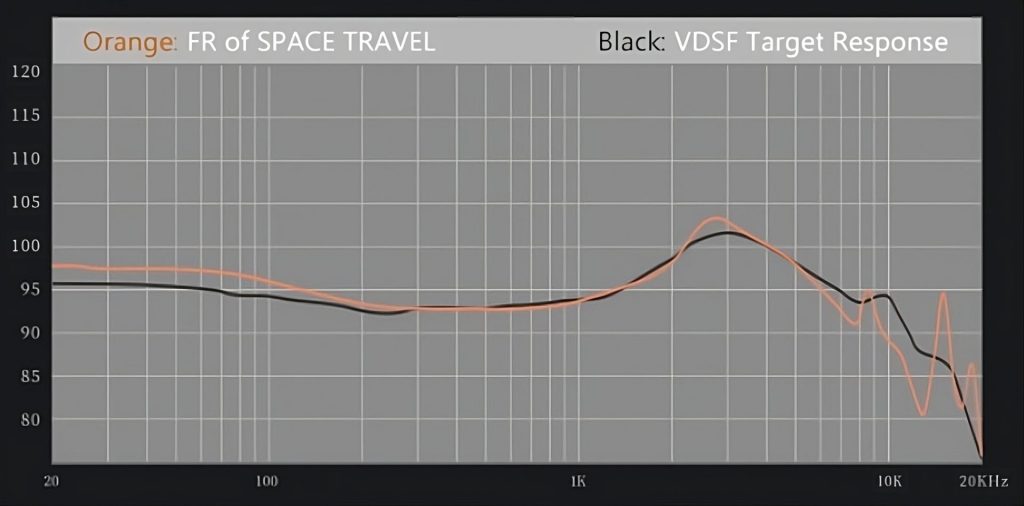
The Space Travel sounds fantastic! The only time I heard audio with such clarity across all frequencies was with a flagship earbud, and it costs at least four times more than the Space Travel. Moondrop has based the tuning of the Space Travel on a Virtual Diffuse Sound Field (VDSF), a range of frequency similar to Harman’s Curve, which is a great reference point for producing great sound quality.
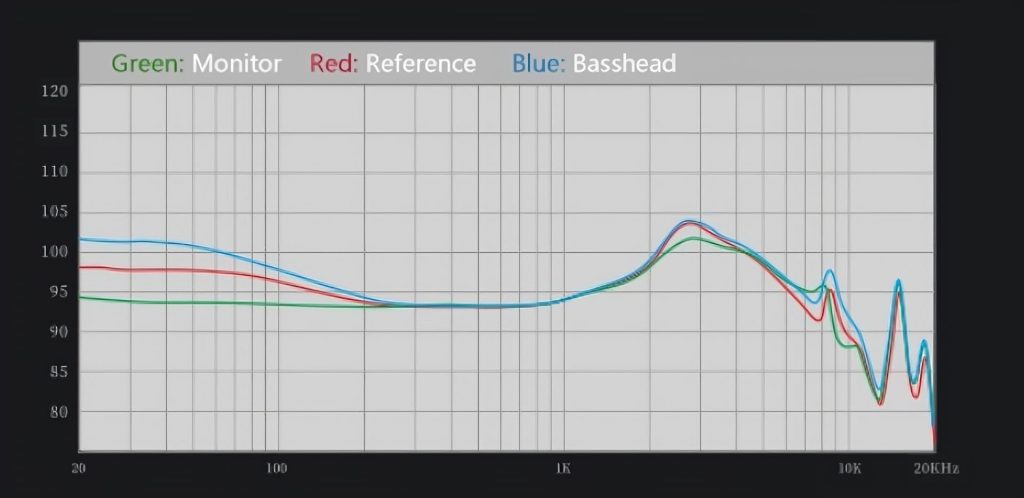
Bass
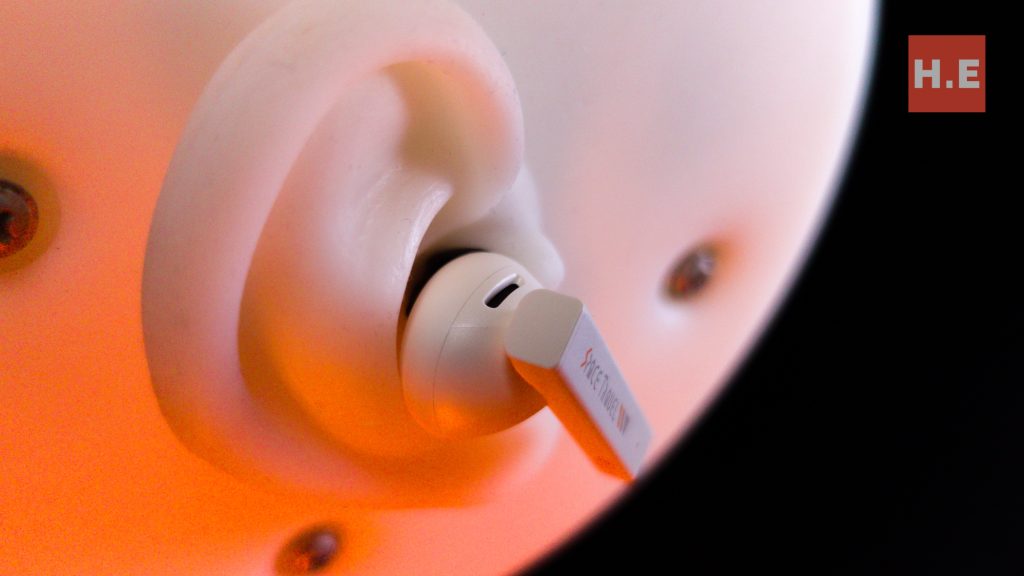
Equipped with a 13mm titanium dome diaphragm dynamic driver, Moondrop sure goes to town with the Space Travel. It produces great bass that is gentle and well-defined with no distortion. Its colors do not spill over to the mids and treble, and it stays a good distance away. The bass is well-defined with the instrument’s unique texture, the layering of the bass strings, and the low hum of the drum after it’s being hit.
The bass head mode enhances the attack and tightens the field. In this mode, the bass is closer to the listener and has more impact and punch. However, in this mode, there is spillage to other frequencies; it feels like a drum solo with its volume cranked higher than other instruments.

With the reference mode, I thoroughly enjoyed Ace Combat 5 Unsung War’s OST. The earbuds perfectly recreated the atmosphere of a tense yet wide-open battlefield. In Part 2 of White Bird, drum strikes are well-layered, and the ripple of the drum’s skin can be heard after each strike. Also, I’m surprised that I can actually sense air pushing against my eardrum during the attack; this is a good sign of power not often noticeable with TWS.
Trebles
Listening to Hans Zimmer’s Interstellar: No Time For Caution with the Space Travel projects an image of journeying from uncertainty to discovery, hope, and peace. The trebles in this music are crisp, clear, and well-projected. When playing women’s vocals, they often shine through quite well, isolating from other frequencies.

In Circle of Life by Lindiwe Mkhize, Leno M. takes front stage amidst the many accompaniments, playing without being muffled.
Mids
Perhaps the most ordinary among the three main branches of frequency, the mids in the Space Travel do not stand out like the others. Well-defined and natural, they have the characteristics of how natural audio should sound. In monitor mode, Moondrop dropped the bass to the same level as the mids. It creates a very different sound profile where vocals take a dominant role.
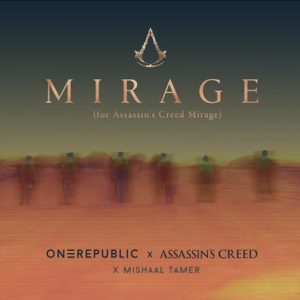
In the song by Mirage – One Republic x Mishaal Tamer, when Mishaal Tamer sings solo, you can hear the crackling from his throat, clear, crisp, airy, and sexy.
Noise Isolation

In this price range, ANC is a staple, but the quality of the ANC is where the essence lies. Moondrop utilizes a feedforward ANC system that uses external signals to generate a noise profile. With noise cancellation mode on, we can sense a strong blockage of air pressure blocking off external noise. The air pressure is not enough to cause discomfort but is noticeable.
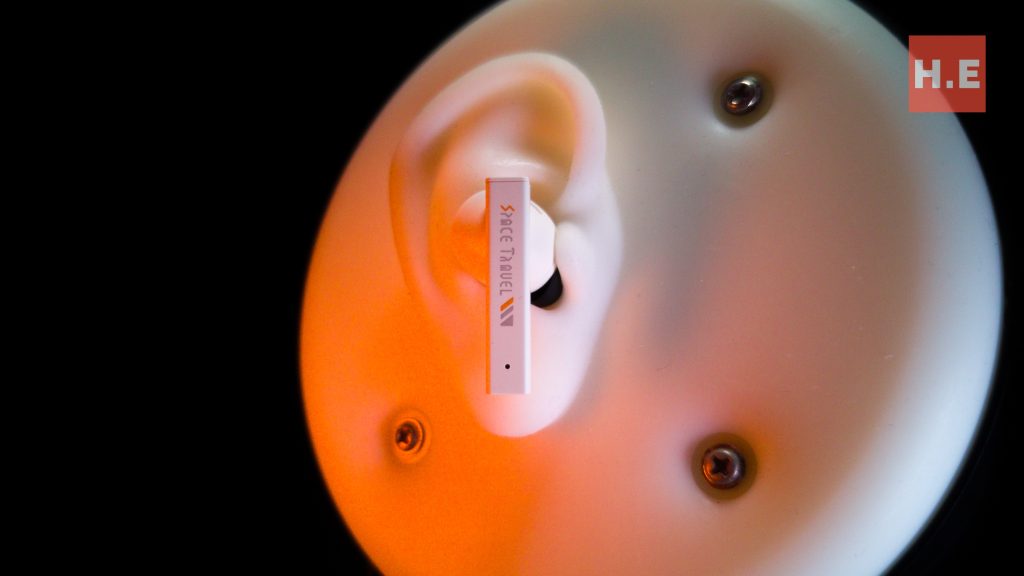
The ANC on the Space Travel works very decently in wide-open spaces, as the open space’s low hum and wind whistling were fully eliminated. However, for random noises like conversations of people passing by, dog barking, and whatnot, ANC was not as effective. This aligns with the nature of the feedforward ANC system, which is good at handling constant noise but weaker with random noise.
Conclusion: Just get the Space Travel
Available at around RM115, the Moondrop Space Travel offer an outstanding blend of affordability and audio excellence. The tastfully design aesthatic with Moondrop home bland of audio quality will blow away all other option available and none would come close.
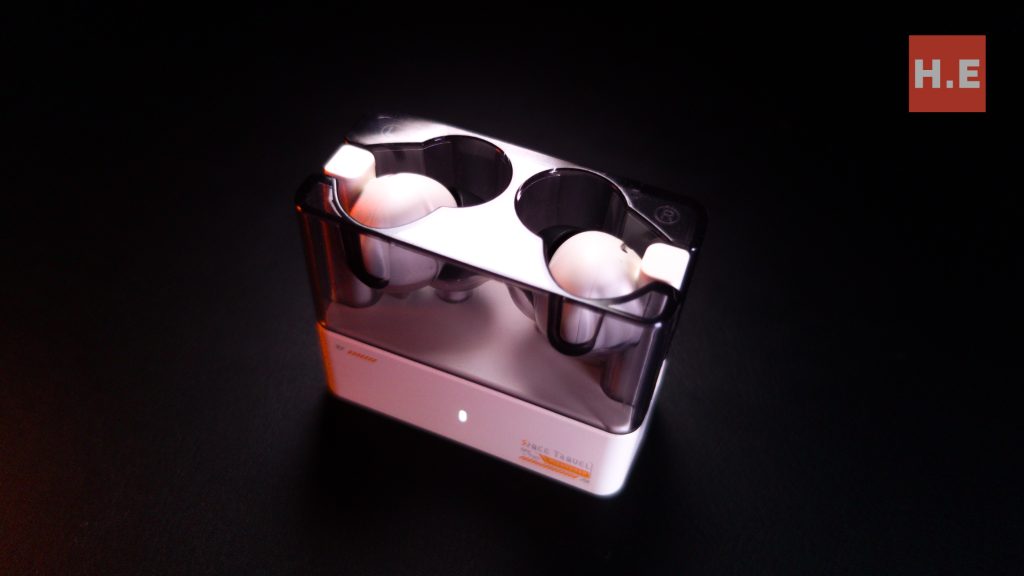
Notably, the sound quality stands out with a finely-tuned balance between powerful bass, crisp trebles, and natural mids. Even when compared to more expensive flagship earbuds, the Space Travel TWS earbuds hold their own, making them a solid choice for audiophiles on a budget.

In a world of TWS, the Moondrop Space Travel prove that high-quality sound need not come with a premium price tag. Whether you’re a music enthusiast, a gamer seeking immersive experiences, or simply someone who appreciates great audio, these earbuds offer exceptional value and audio performance. With that we also see fits to rank the Moondrop Space Travel with HelloExpress’s Gold award:

If you’re looking for other audio devices, check out our reviews below:
Creative Outlier Free Pro+ Review
HyperX Cloud Stinger 2 Review
ACEFAST T8 Crystal Review
Huawei Freebuds 5 Review

Moondrop Space Travel
Moondrop Space Travel prove that high-quality sound need not come with a premium price tag. Whether you're a music enthusiast, a gamer seeking immersive experiences, or simply someone who appreciates great audio, these earbuds offer exceptional value and audio performance.
Positives
- Affordable
- Great audio quality
- Multi-mode sound significantly different
- ANC works great in wide open area
Negatives
- No button on case?





